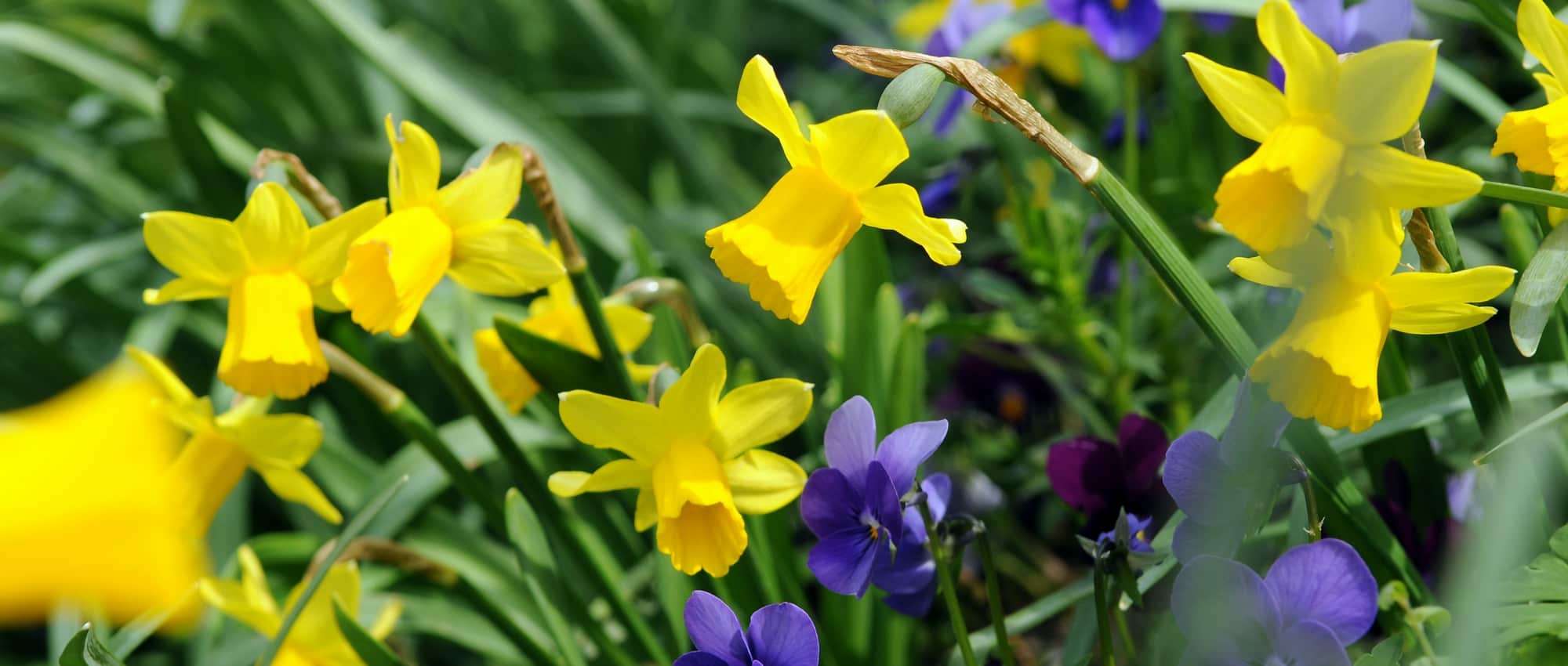
Narcissus or daffodil: 8 ideas for associations
for a bright spring garden!
Contents
Daffodils are bulbous perennials that awaken the garden in spring with their bright flowerings! They offer white or yellow flowers, sometimes very simple and natural, other times more sophisticated. They are perfect for creating a stunning spring scene, alongside other bulbs, spring-flowering bushes, and more. Discover how and with which plants to combine them. In what type of garden and for what atmosphere? How to match their colours with those of other plants?
For a very natural effect!
Whether in a short grass meadow or in a woodland garden, daffodils are perfect for adding a very natural touch. Opt for single-flowered varieties and botanical daffodils. For yellow flowering, choose Narcissus pseudonarcissus, the true wood jonquil. You can also opt for the elegant flowering of the Poet’s Daffodil, Narcissus poeticus ‘Actaea’. Other varieties have a rather wild and natural appearance, such as the small white and yellow flowers of Narcissus tazetta ‘Avalanche’, or the delicate flowers of Narcissus ‘Lemon Drops’. Scatter the bulbs randomly by throwing them on the ground and planting them where they fall. Let them naturalise. Plant alongside them some muscari, lady’s mantle, or fritillaries (Fritillaria meleagris).
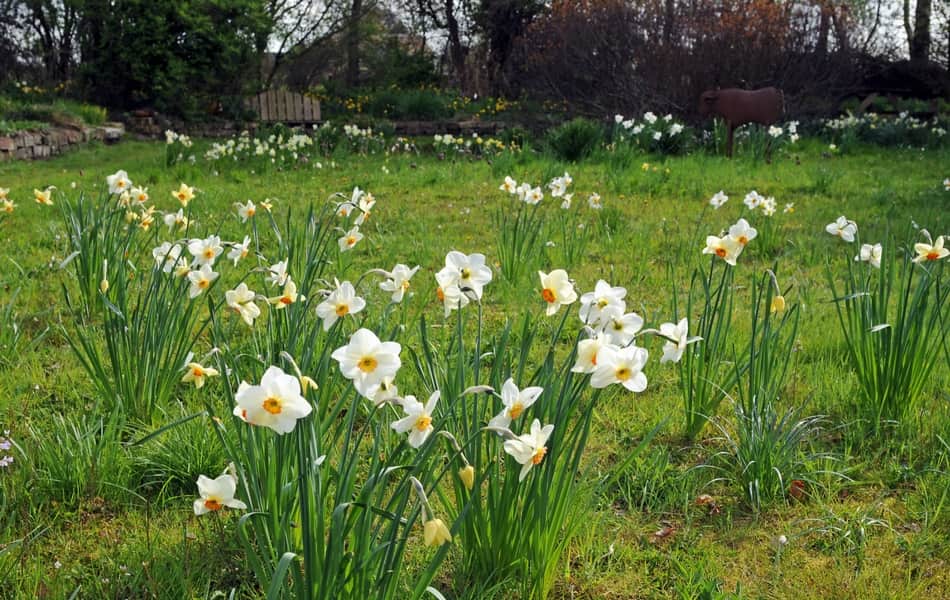
Single-flowered daffodils create a natural and wild effect
Read also
Plant early daffodilsOn the edge, with bulbs and perennials
Use daffodils to create a colourful path border that comes alive in spring! Plant them in masses, quite densely. This will also allow you to easily enjoy their fragrance in spring! Create splashes of colour or waves by alternating daffodils, tulips, and muscari, choosing varieties in bright tones. You can also plant daffodils with perennials that will fill the space when they are in dormancy, for example by planting them alongside hardy geraniums or hostas!
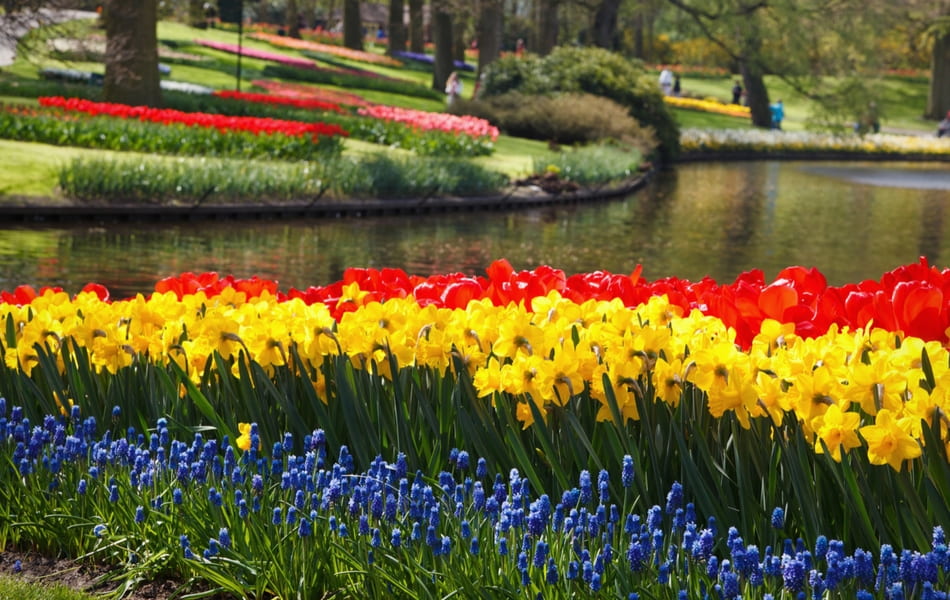
Create a colourful border by combining daffodils, tulips, and muscari.
Discover other Narcissi - Daffodils
View all →Available in 1 sizes
Available in 1 sizes
Available in 1 sizes
Available in 1 sizes
Available in 1 sizes
Available in 1 sizes
Available in 1 sizes
Available in 1 sizes
Available in 1 sizes
Available in 1 sizes
With other spring bulbs!
Daffodils pair well with other spring bulbs, such as hyacinths, tulips, or muscari… They have similar growing conditions and are planted at the same time, in autumn! Therefore, it is very easy to combine them by planting them together. Moreover, they will deter rodents and protect your more sensitive bulbs. Plant alongside them Fritillaries (Fritillaria meleagris), Iris reticulata, crocuses, or snowdrops. Also discover Puschkinia, a small bulbous plant with delicate pale blue flowers!
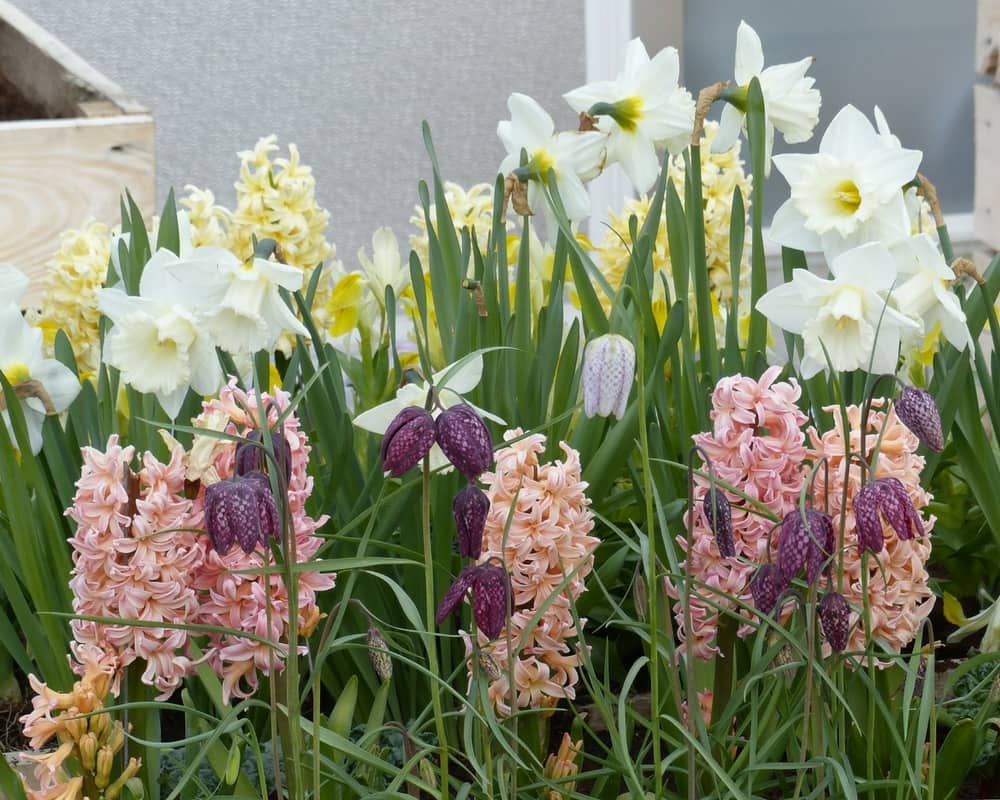
Narcissus ‘Mount Hood’ with Fritillaria meleagris and Hyacinth ‘Gipsy Queen’
In rockery
Some daffodils can be planted in rock gardens. Turn to botanical Daffodils or small varieties, such as Narcissus tazetta. You can choose the daffodil ‘Tête à tête’, an early variety with yellow flowers. For an original flowering, opt instead for Narcissus bulbocodium ‘Cantabricus’. Pair them with small ground-cover plants, such as sedums or houseleeks. Plant alongside them some carnations and a few grasses: clumps of Festuca, Stipa, or Carex.

Festuca glauca, Narcissus ‘Tête à Tête’ and Sempervivum arachnoideum (photo Kristine Paulus)
In a pot or planter
Plant your daffodils in containers that you can place next to your house entrance or on a windowsill. This way, you can enjoy the fragrance of daffodil flowers in spring! You will also be able to easily create bouquets without needing to venture to the back of the garden while temperatures are still cool. Choose the smaller varieties: the ‘Paperwhite’ Daffodils and ‘Tête à tête’ are particularly well-suited for this! Also, discover the delicate flowering of Narcissus tazetta ‘Minnow’. Pair them with forget-me-nots and pansies, as well as other bulbs like muscari, hyacinths, or tulips. You can plant the bulbs together in the same pot but at different depths.
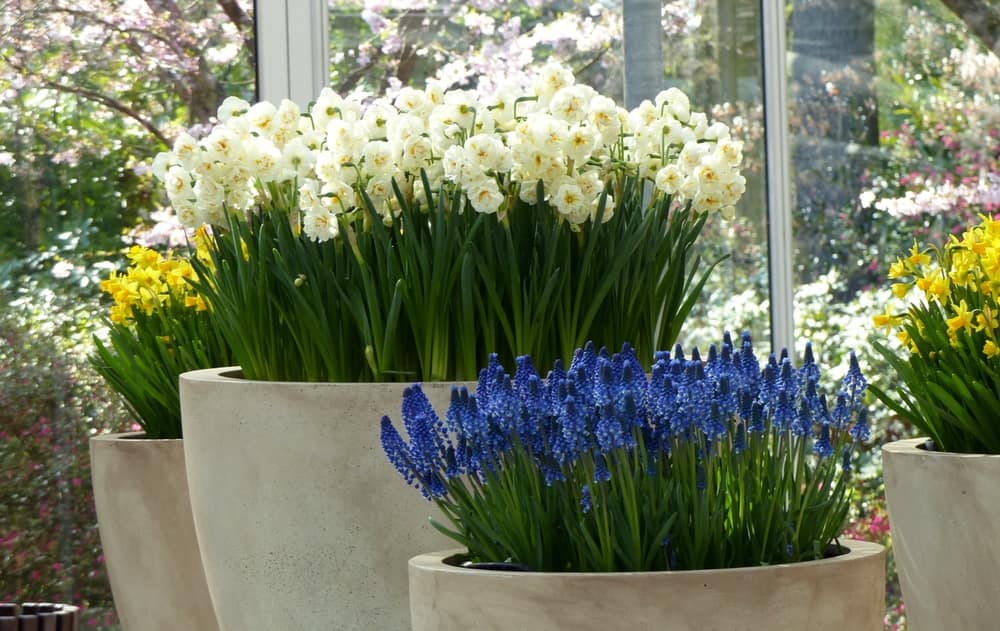
Daffodil ‘Erlicheer’ and Muscari ‘Early Magic’
At the foot of deciduous trees or bushes
Use daffodils to flower the base of your deciduous trees or bushes. They will allow sunlight to pass through in winter and early spring. Plant daffodils at the base of your dogwoods, maples, or spindle trees… Time their flowering with that of Forsythias or Corylopsis, which are also in the same shades! You can also plant them at the base of flowering cherry trees, creating a stunning contrast! Also enjoy decorative woods such as those from dogwoods (Cornus sanguinea, Cornus alba…) or Prunus.
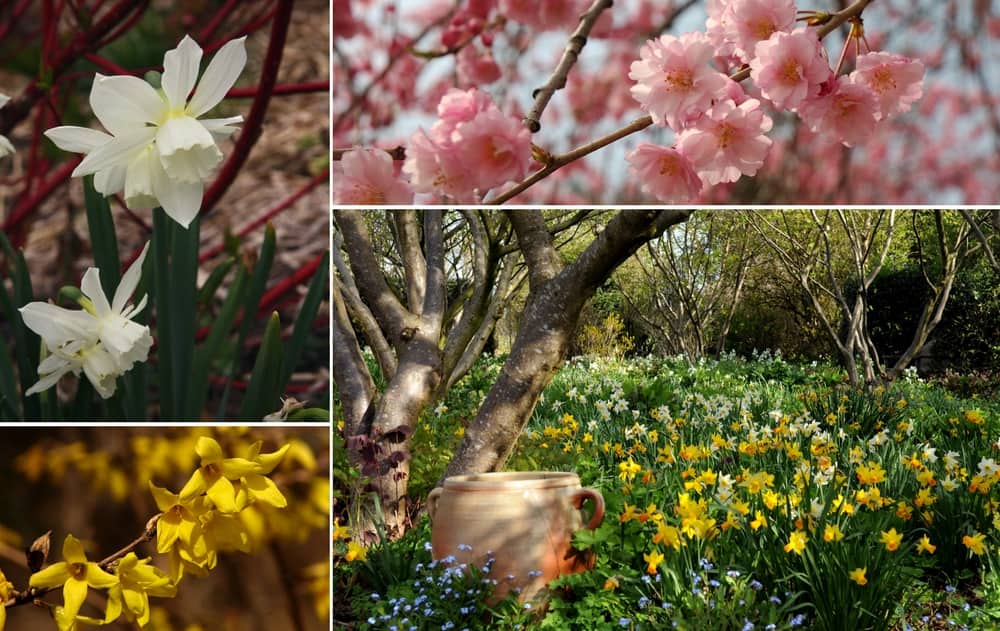
Daffodil ‘Thalia’ and Cornus alba ‘Sibirica’, Forsythia, Prunus serrulata, Daffodils ‘JetFire’ under deciduous trees (photo iBulb – Wouter Koppen)
To play with colours!
Create a beautiful colour harmony by gathering only plants in the same tones: for a white scene, you can combine ‘Mount Hood’ daffodils with ‘Concerto’ tulips, ‘Carnegie’ hyacinths, ‘White Magic’ muscaris, and ‘The Bride’ anemones. You can do the same with yellow flowers.
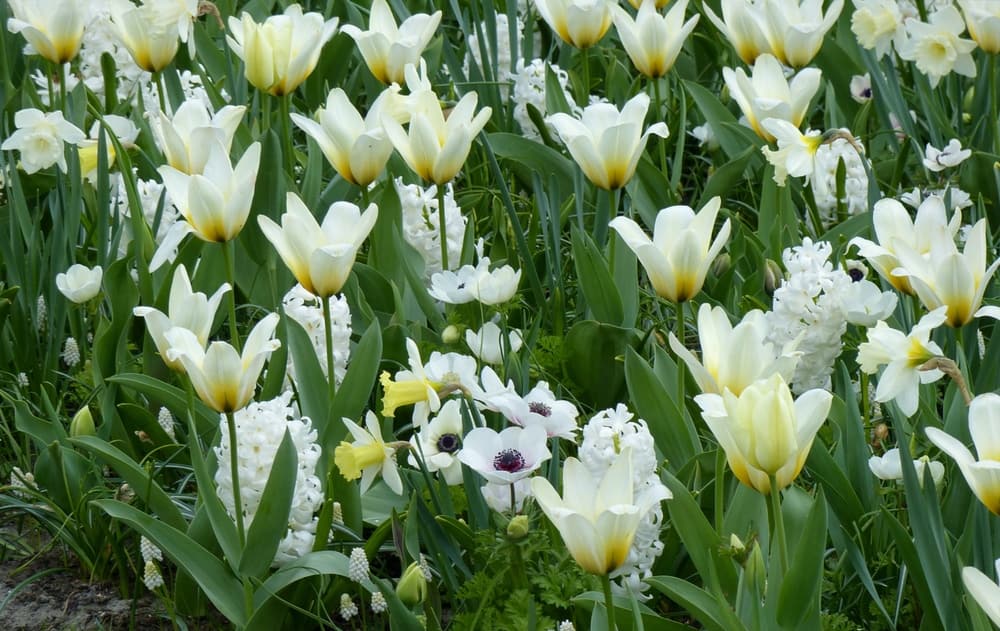
A white scene with ‘Mount Hood’ daffodil combined with ‘Concerto’ tulips, ‘Carnegie’ hyacinths, ‘White Magic’ muscaris, and ‘The Bride’ anemones
On the contrary, dare to use contrasting colours. Pair the yellow of daffodils with the blue of muscaris and Iris reticulata, to highlight the intensity of these colours! Combine the yellow of ‘Peeping Jenny’ daffodils with the mauve or pink of ‘Passionale’ tulips, Anemone coronaria ‘Double Amiral’, and Anemone blanda ‘Charmer’. Another example: use the light flowering of Narcissus ‘Step Forward’ to accentuate the dark shade of Fritillaria persica!
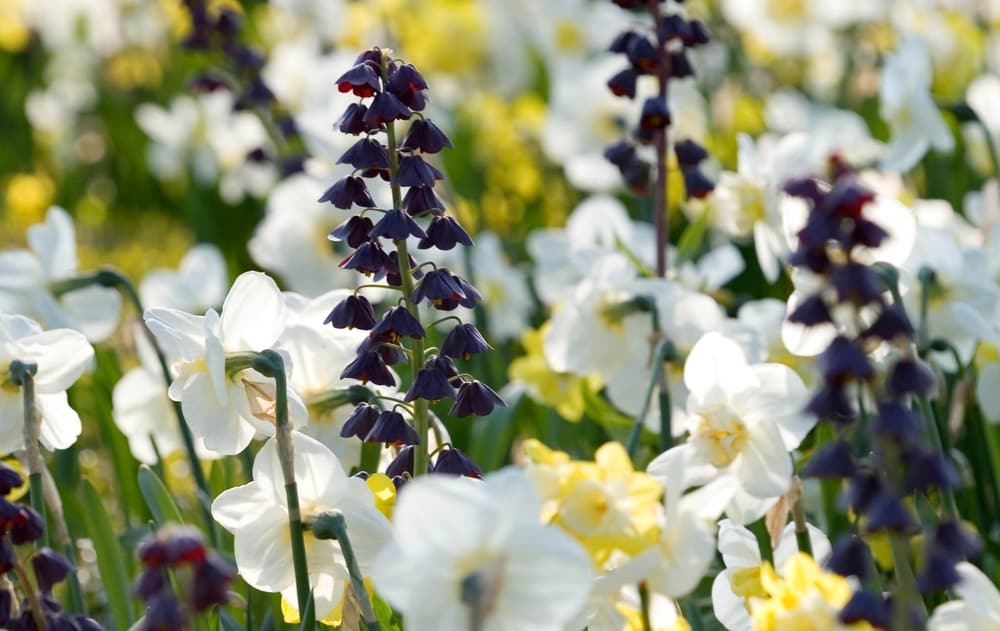
The ‘Step Forward’ daffodil beautifully highlights the shade of Fritillaria persica (Copyright GAP – Pernilla Bergdahl)
In bulk in a short grass meadow
Plant a large quantity of daffodils in a short grass meadow to create a wave of yellow or white flowers! The effect is truly impressive, with all these plants brightening up the meadow in spring. Depending on the density and variety chosen, you will achieve a more or less natural atmosphere. You can play with the shapes, planting them densely and uniformly, concentrating them at the base of trees, or scattering a few clumps throughout the meadow, possibly mixed with other bulbous plants. In the latter case, you will achieve a very wild effect.
Be careful not to mow the short grass meadow before the foliage has completely faded. If you only install a few clumps, you can avoid them. Otherwise, you will need to leave the area quite wild and only mow it late.
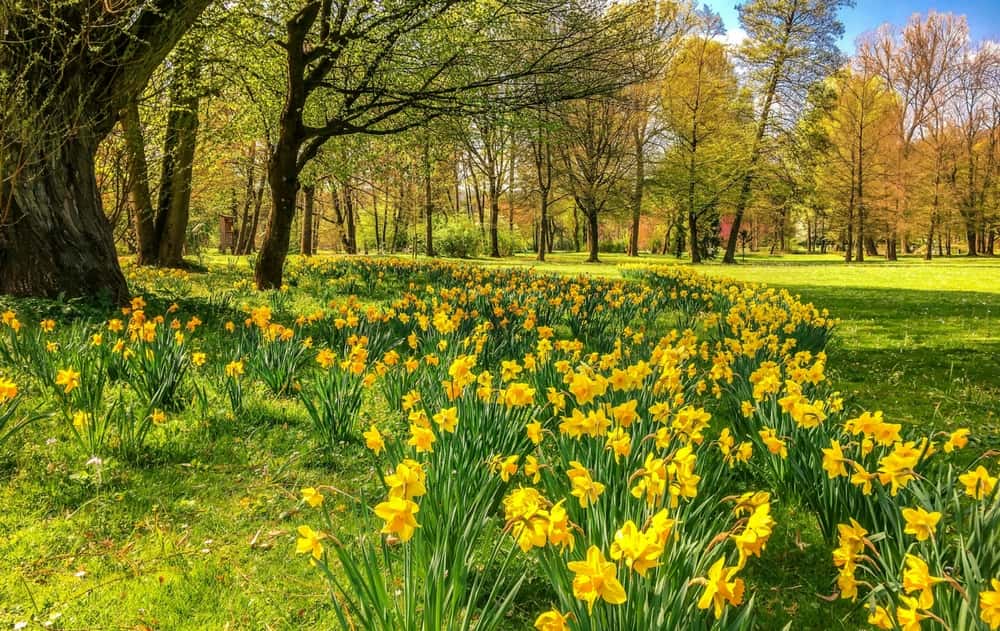
Daffodils create a superb effect when present in mass in a short grass meadow
- Subscribe!
- Contents































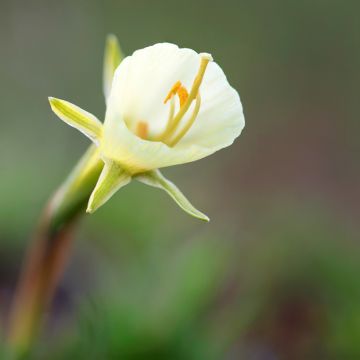
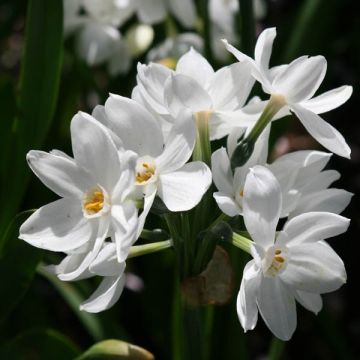
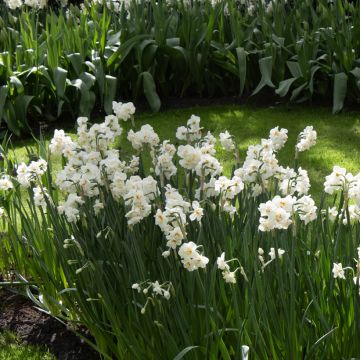
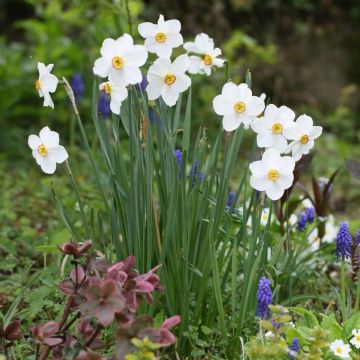
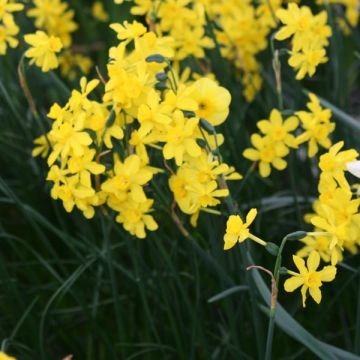


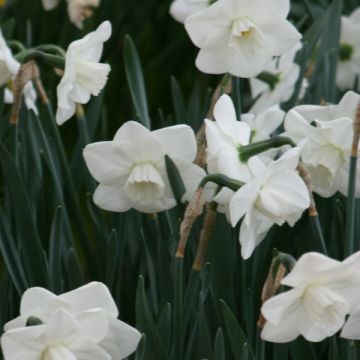


Comments